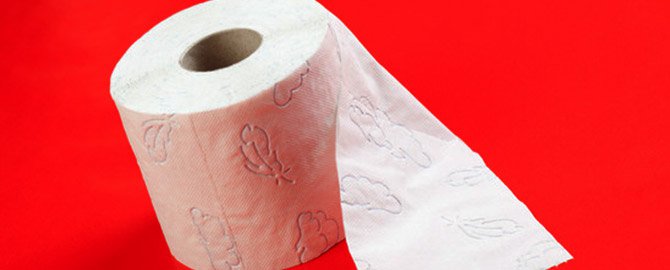Buying toilet paper is something we do without thinking. We choose our brand based on price, previous experience or press hype. Advertising ranges from cuddly golden retriever puppies running amok with toilet rolls, to cartoon bears who “can’t pass inspection with white bits stuck” to their tail ends. One thing few consumers consider when choosing toilet paper is whether it’s good for your toilet. We did some research to find out which brands of toilet paper are generally believed to be better – and worse – when it comes to causing blocked toilets.
Toilet Paper Composition
Modern toilet paper is made from thin layers of paper treated with a light coating of aloe, lotion or wax to reduce the roughness. Manufacturers try to balance the use of shorter fibers that cause rapid decomposition with that of longer fibres, which increases the strength. Virgin toilet paper is made directly from chipped wood, while recycled toilet paper is made from previously-used paper and board products. So which one causes your blocked toilet? The brand that takes longer to disintegrate, that’s what. It remains in the pipes longer, preventing the toilet from flushing properly and causing a backlog that your local Toronto plumbers will need to attend to.
Research
ConsumerReports.org conducted research on different brands of toilet paper available in Canada and came to the conclusion that the best brand, while made here, is only available in the United States. White Cloud 3-Ply Ultra Soft and Thick was rated the best overall, in terms of strength, softness, and decomposability, which identifies whether the product would result in a blocked toilet. Good Housekeeping ran similar tests to identify the best buy for your money and found that contrary to popular belief, single-ply toilet paper didn’t necessarily decompose faster than the thicker brands.
Best Brands of Toilet Paper to Choose
– Charmin Ultra Soft 2-Ply, one of Canada’s favorite brands, was found to be very soft and strong, but not a good choice if you have fussy plumbing. It was found to take longer to break down than other brands, which is a prime cause of blocked toilets.
– Canada’s own Royale brand, famous for its two white kitten ads, performed well in independent testing, and Toronto residents with low-flush toilets give it the highest ratings for flushability, although local plumbers don’t necessarily agree.
– Cottonelle, while the second most expensive brand after Charmin, wasn’t nearly as popular.
– PC Green, made from 100% recycled paper, was found to be the roughest as well as the hardest to flush away.
Toilet Paper, Put to the Test
The products are tested for strength by stacking and inserting several sheets into a machine that pushes a steel ball through them, recording the force required. The sheets are evaluated for softness and pliability by manipulating them manually in a temperature-controlled environment. Testing for disintegration takes place in a beaker of water placed on a stirring plate, and the time it takes for the paper to break up determines the score, and rates whether the paper is likely to be the culprit for blocked toilets.
This research shows there’s more to toilet paper than meets the eye, and local plumbers believe that your choice of the brand has much to do with it. If you regularly have to deal with the inconvenience of a blocked toilet, try changing your brand of toilet paper periodically, and record which brand gives you the best results. Don’t just buy for price or softness – the cost of having to continually unblock your toilet might outweigh the slightly higher price of a better quality toilet paper.
For more information on ways to prevent blocked toilets, contact your local Toronto plumbers today for advice, free inspection or an estimate for your needs.
*Disclaimer: The content of this post represents comments gained from private individuals and does not necessarily reflect the official opinion of ADP Toronto Plumbing.
HEY! Have a great story about toilet paper or blocked toilets? We’d love to hear about it! … and what’s up with “little white pieces” anyway?

